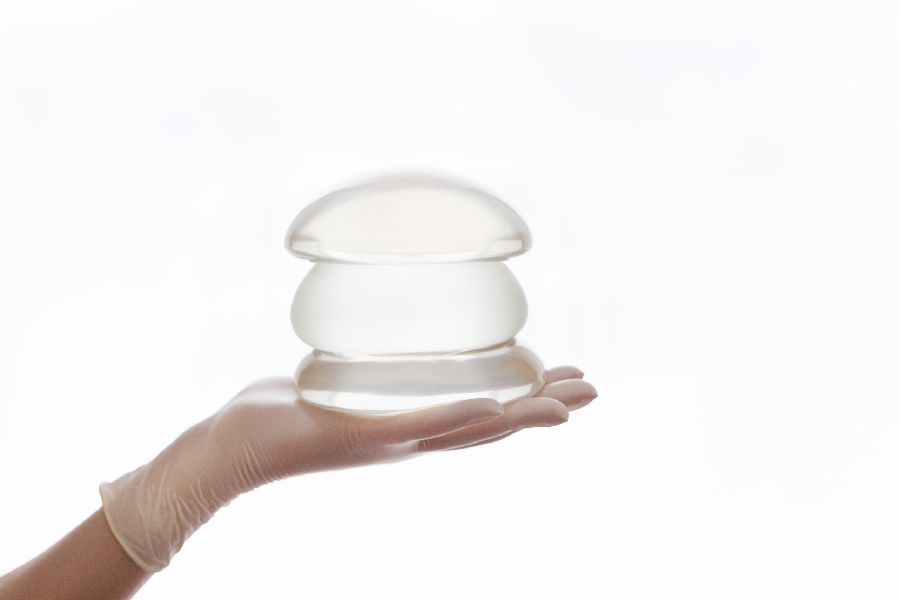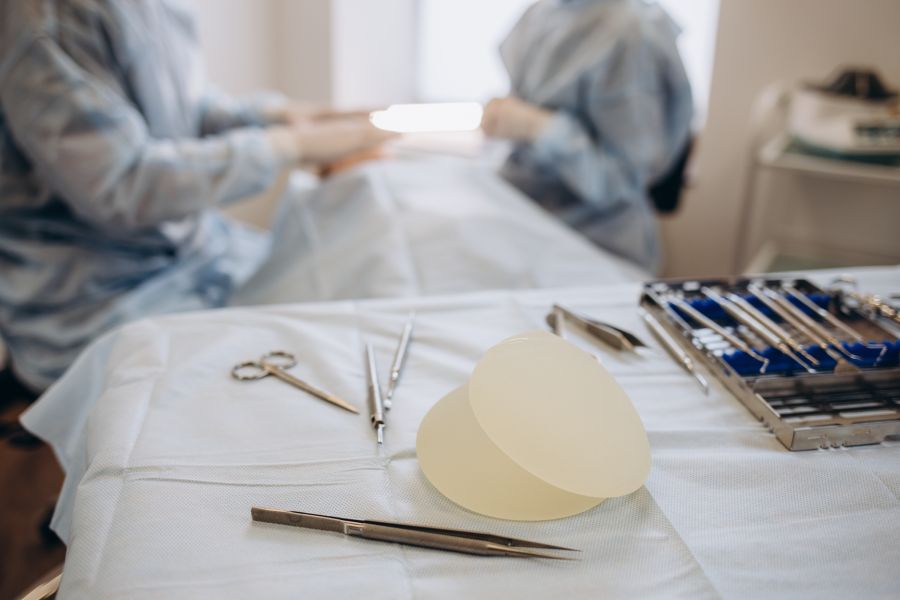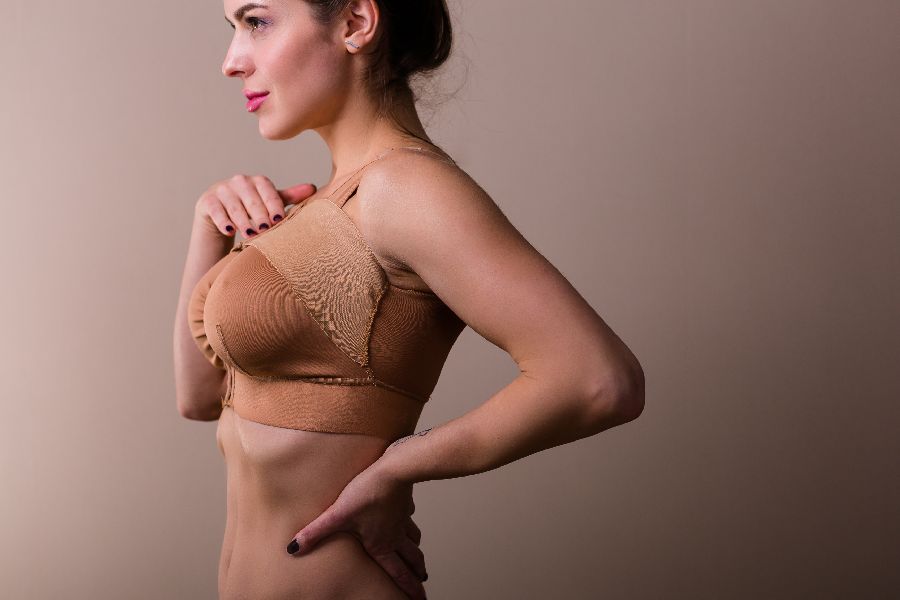Breast augmentation has been around for decades and is available to almost anyone. These procedures aim to improve a person’s physical appearance, thus boosting confidence and self-esteem. Many indulge in these cosmetic surgeries without knowing how painful is breast augmentation.
Even though there might have many goals concerning your breast augmentation, you must discuss them with a plastic surgeon. This procedure may enhance your appearance, correct uneven breasts, and help with your mental well-being.
In this article, you’ll learn just how painful breast augmentations can be and how to manage the discomfort. Explore the recovery time frame and how long do incisions hurt after breast augmentation.
[ez-toc]

Source: shutterstock.com/ Photo Contributor: Alim Yakubov
How Painful Is Breast Augmentation?
The pain level of implant surgery is one of the most common questions asked regarding breast augmentation. However, the simple answer would not be as much as you would imagine. Pain medications such as Advil or Tylenol are adequate to manage any aching you might experience during your recovery.
The procedure itself plays out by creating an incision in the inframammary fold, which provides a “pocket” for the breast implant. It’s typically made under or above the breast using surgical tools and techniques. Once the implant is in place, the incision is sealed, and the patient goes into recovery.
While in recovery, there are many factors that influence the amount of pain you might experience. The absolute main factor that impacts your pain management is your pain tolerance.
Some people have high tolerance levels, which allows them to manage pain and discomfort better. On the other hand, if you have low tolerance levels, you might be much more sensitive to pain and stimulation.
Even though pain tolerance is something we can’t control, it may significantly help when it comes to breast augmentation recovery.
Factors Influencing the Amount of Pain Experienced
In addition to pain tolerance, other significant factors influence the pain you may experience. It’s good to remember that everybody is different and reacts differently to pain.
If you’re experiencing unusual or unbearable pain, it’s vital you consult with your plastic surgeon or health provider. They will most accurately provide a solution to your issues and help you go through the process.
However, understanding where the soreness and aching come from is important. So, here are a few additional factors that may influence the amount of pain you may be experiencing:
The implant’s size
Depending on the size of your implants, you may experience more or less pain.
How many cup sizes you may expect to gain following the procedure and the weight of the implants themselves determine the size of your implants. So, naturally, larger implants that increase the size of your breasts by more than one cup are associated with more significant pain and degree of discomfort in breast enhancement.
On the other hand, smaller implants that increase breast size by one cup may cause less pain. Smaller implants are also used to correct the shape of a natural breast and are much lighter, thus reducing pain perception during breast surgery.
The implant’s type
There are two basic types of breast implants you can choose from:
- Saline breast implants
- Silicone gel breast implants
The type of breast implant you choose will determine how much pain you may experience after your surgery. The implant type generally correlates with the weight, so this impacts the soreness and aching after your procedure.
Saline breast implants are silicone shells filled with sterile salt water. In comparison, silicone gel implants are silicone shells filled with plastic gel or silicone.
Since the saline types are far less dense than the silicone gel ones, you may expect them to be more comfortable and less pain-inducing during recovery.
The implant’s position
The position of the breast implant might be the most significant indicating factor for expecting soreness and pain. The recovery process may be more challenging or faster, depending on the placement of the implants.
Implant positions can be either submuscular or subglandular.
Submuscular positions are implants that are placed beneath the breast. This means that the implant will be positioned under breast tissue causing the muscles to stretch to accommodate the implant. This may cause undesirable aching in your chest area.
However, subglandular placemats are ones placed between the natural breast tissue and the muscle wall of the chest. These types of implant positions tend to cause less pain and soreness during the recovery process.
Previous pregnancy
Pregnant and breastfeeding women who have undergone breast augmentation after pregnancy and breastfeeding claim to have experienced less overall pain.
Many breastfeeding women compare the level of pain in breast augmentation with discomfort while breastfeeding a child.

Source: shutterstock.com/ Photo Contributor: Roman Fenton
Typical Pain Levels During the Recovery Process
Once you’ve understood the basics and finalized your decision to get breast augmentation, here’s a breakdown of the recovery process. Taking care of yourself post-surgery should be of utmost importance when going through these procedures.
In order to get the most satisfactory outcomes, you must choose the right plastic surgeon. When examining your choices, do your research, look for certificates, and study the surgeon.
Additionally, you should schedule consultations to vet the facility and look for honesty. In these consultations, you can learn anything you need to know about the surgery, the recovery process, and the pain you may experience. Understanding the overall time frame of the procedure will help you get better acquainted with it.
The amount of pain you may experience after surgery can be broken down into four main stages. These include the following:
Immediately after your breast augmentation
The period immediately after your breast augmentation procedure is probably one of the least painful stages. This is because you’d be waking up from anesthesia which may still hold its effects.
Generally, the first thing you’d notice is an increase in weight in your chest area from your implants. Furthermore, you might experience minor to no aching or tightness in your breasts. However, in this period, you’d mostly feel disoriented and dizzy from the general anesthesia, so you might not even notice the symptoms.
Hours after your breast augmentation
A few hours after your breast augmentation, the anesthesia will start wearing off. This indicates that you might experience more aching or tightness in your breasts from the implants.
Many women who have undergone these procedures compare the sensation to pulling a muscle. This feeling may significantly increase if your breast implant is placed beneath your muscle.
Days after your breast augmentation
After several days after your breast surgery, you might feel more discomfort and pain. This is because the healing process has officially begun.
During these days, you may start feeling inflammation around your incisions from the surgery. You may also feel aching and weight from your implants as well as some inflammation. This is because your body prepares and adjusts to accommodate the breast implants.
Most women feel minor aching, tenderness, and cramps, but some may experience more pain and soreness. Whichever the case, these pains should go away within the week and might be easily managed with pain medications prescribed by your health provider.
Weeks after your breast augmentation
After a few weeks, your body will be almost completely healed and adjusted to the change. During these times, the soreness and discomfort may gradually disappear as you proceed in the recovery.
Aside from some tenderness, many women feel minimal to no pain during the three to four-week mark. However, the aching could be gone entirely by the time you hit the one-month mark. Some women compare the pain level of breast augmentation with PMS.
Surgeon’s Recommendations for Pain Management
The recovery will last for several weeks, and you’ll have to follow some instructions. Your surgeon or health provider will ask you to follow simple post-surgery guidelines. These should help you go through each phase with ease and as little aching as possible.
Some of the guidelines include the following:
- Sleep and rest on your back
- Getting frequent and proper rest
- Avoid heavy physical activity and work
- Indulge in light activities such as walking
- Avoid extensive temperatures, such as saunas, hot tubs, and sun
The individuality of everybody makes it crucial to consult with a plastic surgeon or health provider. This means that the recommendations and guidelines vary from person to person. While some women benefit from certain medications or activities, others may not.
So, before taking any action or medication, consult your health provider to get the best possible results.
Below, you’ll find additional instructions regarding breast augmentation recovery to ease the pain and discomfort. These will include medications, incision care, showers, and types of clothing you should wear.
Medications
Over-the-counter pain medications such as Advil or Tylenol are adequate to manage any discomforts you might experience during recovery. However, these may not work for everyone. Some women may find specific medications beneficial when it comes to pain management.
Muscle relaxers and antibiotics are most commonly prescribed for patients undergoing breast augmentation. These medications may make your recovery and post-treatment process as seamless as possible.
Many studies suggest that methylprednisolone is most beneficial for breast augmentation recovery. It’s proven to reduce pain, emesis, and fatigue after implant surgeries.
However, consulting with a health provider is important before taking any action. These professionals know what best suits your body and how it will react. To avoid any additional risks and undesired outcomes, stick to your given instructions and guidelines.

Source: shutterstock.com/ Photo Contributor: wutzkohphoto
Incision care
During breast augmentation, the surgeon will make one out of three incision types:
- Inframammary – under your breast
- Axillary – under your arm
- Periareolar – around your nipple
In order to avoid and minimize any possible scarring, your incisions will require special care and treatment. Following proper instructions for cleaning your wounds is a critical step in your incision care routine. This includes the type of soap and water temperature that is ideal for cleansing your incisions.
It’s also important to properly pat dry your incisions. This should reduce any risks of infection or bacteria getting into the wounds. In addition to that, it may encourage the healing process and minimize any discomfort or pain during your recovery.
The initial bandages from the breast augmentation are removable, so you’ll be allowed to remove them post-surgery. However, the sutures, surgical glue, or surgical tape that keeps the wounds closed should not be touched. Only surgeons and medical professionals can get that job done.
Post-surgery, you will be given special clothing and bras that will need to be worn constantly during recovery. Your surgeon will give you specific directions and guidelines concerning how these bras should be worn and for how long. You’d most commonly be required to wear these bras 24 hours a day for six to eight weeks.
Furthermore, during your recovery, you will be allowed to remove your bra during showers. In the late stages of your recovery, you can also take off your bra for several hours for relaxation and comfort. However, your surgeon will best clarify how, why, and when you can remove your recovery bra.
These bras are required for post-surgery because they provide additional support for your breasts and may help with the healing process.

Source: shutterstock.com/ Photo Contributor: Tinatin
Frequently Asked Questions
Who are good candidates for breast augmentation?
Good candidates for breast augmentation are women unsatisfied with their breast shape, size, or fullness. This includes women who are thin and have less breast tissue and aging women with loose breast tissue. Good candidates can also be women who have finished breastfeeding and want to return to their natural, pre-pregnancy breast shape.
How do you know what size implant is right for you?
The choice of your ideal implant size comes down to you and your surgeon. The best size will be decided through your physical aesthetic goals for your body and your actual body shape. This choice will determine the overall outcome of your breast augmentation.
